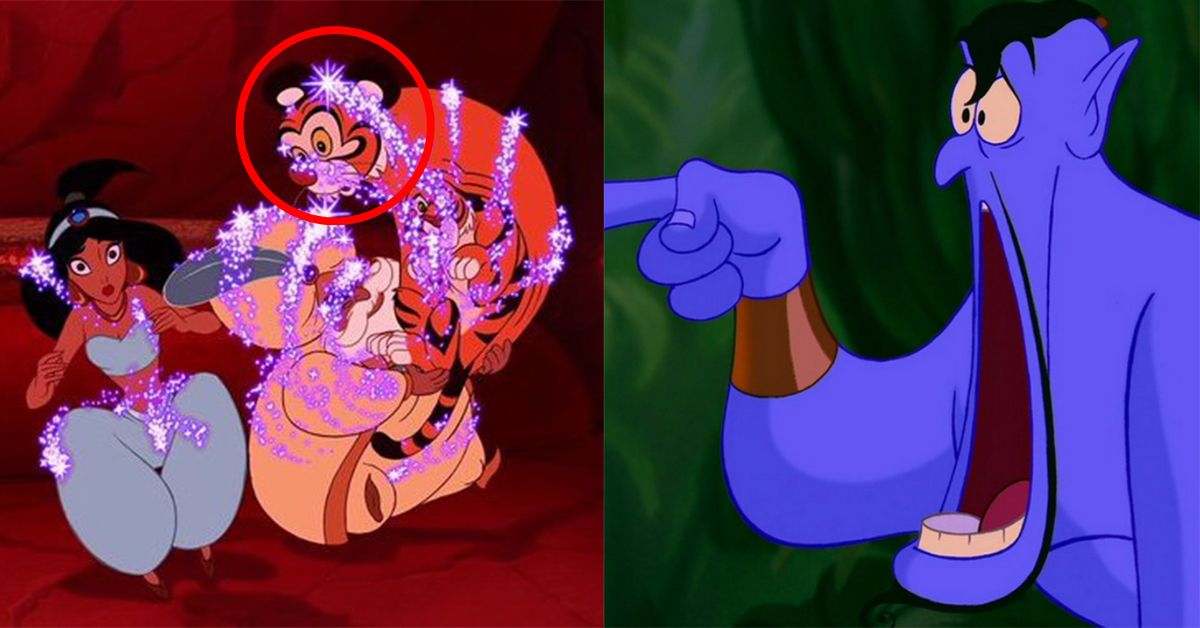In 1992, Disney was firing on all cylinders. The so-called ‘Disney Renaissance’ was in full swing, with The Little Mermaid and Beauty and the Beast respectively earning critical acclaim and box office success in 1989 and 1991. The stage was set for something even bigger.
Now, with Guy Ritchie’s live-action Aladdin remake having recently proved such an enormous hit for Disney, we decided to take a look back at the 1992 classic that spawned it.
20. Aladdin was accused of ‘ripping off’ another animated film

When it comes to animated movies set in the Middle East that feature a bumbling sultan, a headstrong princess and a Machiavellian magician, the list is quite short. That’s why, when The Thief and the Cobbler was released in 1993, a mere year after Aladdin, it was dismissed as a knock-off.
[rtk_adunit_top]
In fact, The Thief and the Cobbler was a labour of love for three-time Oscar-winning animator Richard Williams – best known for Who Framed Roger Rabbit – who began the project as early as 1964. In other words, it predated Aladdin by decades.
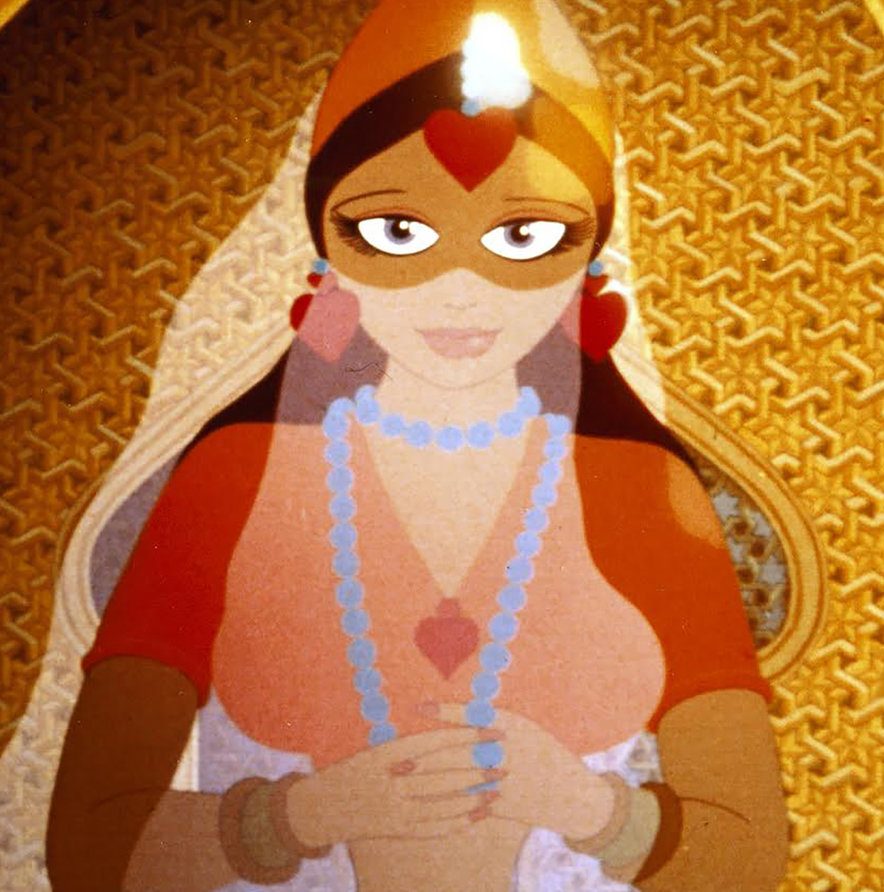
So well-regarded was Williams in the animation industry that several legendary animators ended up contributing to Cobbler, including Disney’s Art Babbitt (who created Goofy) and Myron Natwick, the illustrator behind Betty Boop.
[rtk_adunit_middle]
Once Cobbler secured a distribution deal, however, Williams was fired. The studio then retooled Cobbler with songs and a flashy celebrity cast, including Matthew Broderick as the titular Cobbler and Jennifer Beals as the princess, in an attempt to replicate Aladdin’s success.

This shone a new light on the movies’ similarities. For one thing, the presence of a blue-skinned sorcerer seems oddly coincidental given Aladdin’s Genie and Jafar. Critics have also noted that the movement style of Aladdin and the Cobbler are remarkably alike, especially so in early test footage.
[rtk_adunit_bottom]
Given that the film was well-known in Hollywood circles, it’s likely that Disney was at the very least inspired by The Thief and the Cobbler. Philip Pepper, one of the film’s animators, put it more bluntly: “Disney just stole it. It’s as plain as the nose your face.”
19. Robin Williams improvised his Genie dialogue
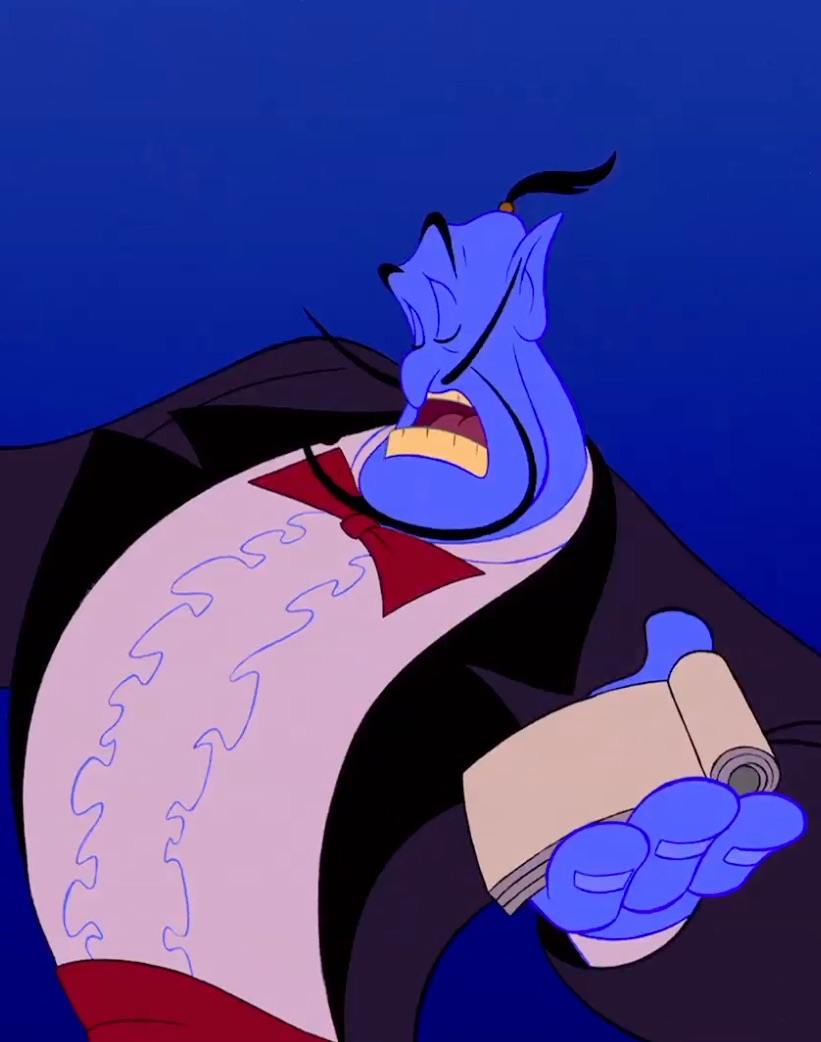
Aladdin’s script, written by directors Ron Clements and John Musker along with Ted Elliott and Terry Rossio, was thrown out when it came to the Genie.
[rtk_adunit_top]
Once they had famous ad-libber Robin Williams in the recording studio, the filmmakers would give the actor situations and topics that he could riff on, then let him loose on the mic.

Williams ultimately improvised some 16 hours of material; the animation team then animated Williams’ ad-libs.
[rtk_adunit_middle]
In fact, so much of Genie’s dialogue was improvised that the film ultimately became ineligible for the Academy Award for Best Adapted Screenplay.

For example, Aladdin’s opening scene is entirely unscripted. Williams was presented with random objects hidden under a sheet and was asked to describe them in character using touch alone.
[rtk_adunit_bottom]
Unsurprisingly, much of Williams’ improvised dialogue was deemed unsuitable for a children’s film. Had Williams his way, the Peddler would have been running a very different store!
18. Williams was paid only minimum wage for his performance
In the late 1980s, Robin Williams was propelled to movie stardom by two films: Good Morning, Vietnam and Dead Poets Society, both of which were released by Disney subsidiary Touchstone Pictures.
[rtk_adunit_top]
As a thank you for his involvement in those two star-making projects, Williams agreed to voice Aladdin’s Genie for SAG scale, the lowest a studio can legally pay an actor.
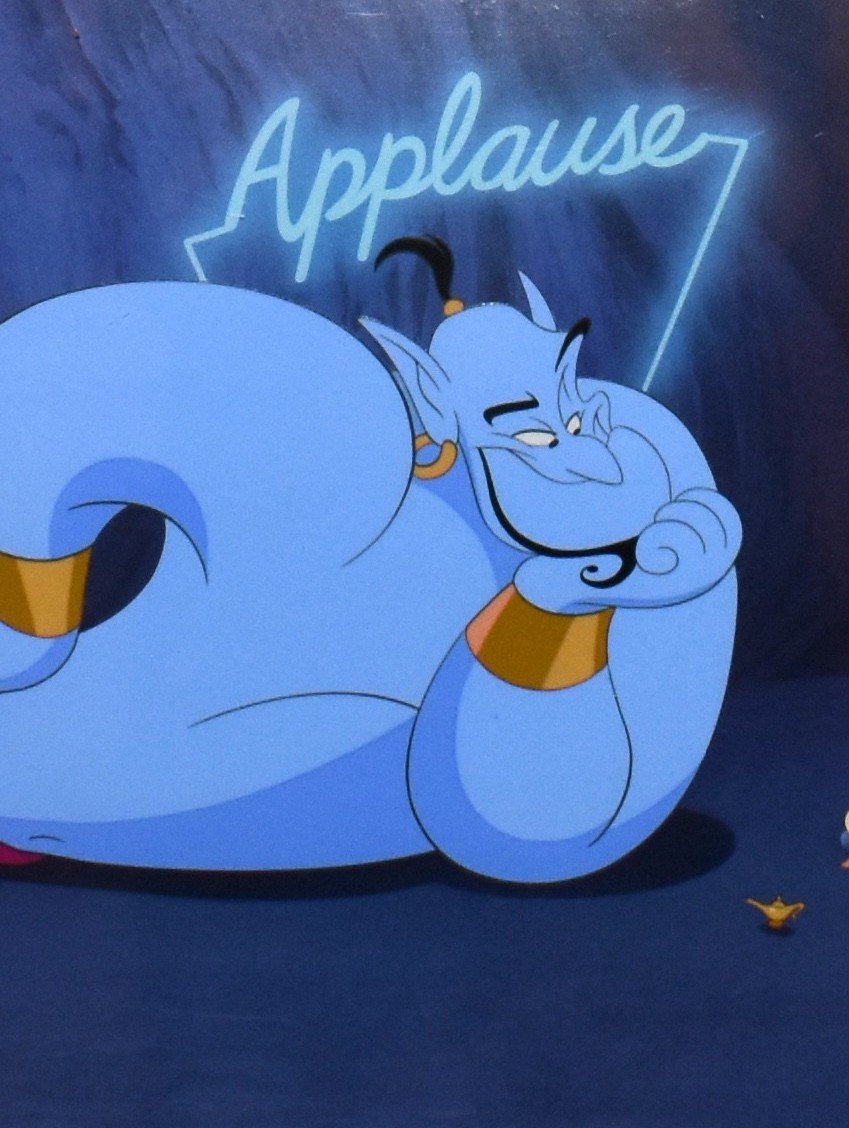
Instead of his then-asking price of $8 million, Williams took $75,000 for his Aladdin recording sessions – the absolute minimum rate, to play the character that audiences probably still remember Williams best for today.
[rtk_adunit_middle]
However, because he was opposed to excessive merchandising, Williams’ deal was conditional. In fact, he insisted that his character and voice took up no more than 25% of any posters or trailers and that his performance would not be used to sell toys or other novelty items.

Disney initially agreed but quickly went back on their word, leading to one of the 90s’ most acrimonious fallings-out between an actor and a studio. Williams was replaced by Homer Simpson voice actor Dan Castellaneta for Aladdin’s straight-to-VHS sequel and video-game spin-offs.
[rtk_adunit_bottom]
Jeffrey Katzenberg, then-CEO of Disney, attempted to win back Williams’ talents by offering him an original Picasso as a gift. Williams declined, only returning to Disney when Katzenberg had been fired.
17. The Genie was inspired by Fats Waller and MC Hammer
Though the part was written with Robin Williams specifically in mind, the Genie was inspired by other famous folks along the way.
[rtk_adunit_top]
The character was first inspired by Fats Waller and Cab Calloway, African-American Harlem jazz musicians popular in the 1930s.
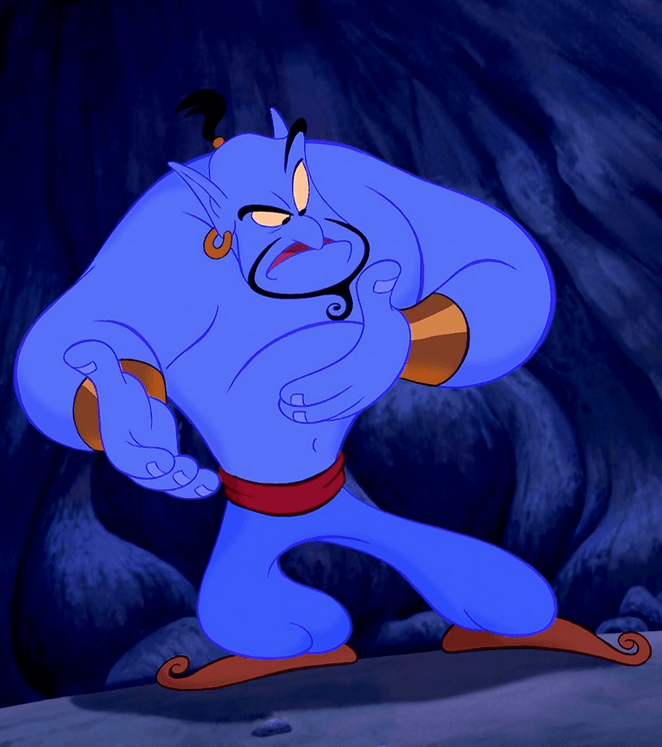
At the animation stage, another popular musician inspired the Genie: MC Hammer, whose dancing was used by animator Glen Keane as a model for the Genie’s movements when in his harem pants.
[rtk_adunit_middle]
Given the vocal pedigree that inspired the character, composer Alan Menken worried that Williams would fail to match the singing abilities of professional musicians. However, as revealed in a Billboard article released after Williams’ death, those worries were quickly put to rest.
Williams, Menken says, was “like a comet streaking across the sky; a brilliant, adorable, hilarious, compassionate, vulnerable manifestation of the human condition … what I remember was a quiet, unassuming, thoroughly professional actor, respectfully working hard.”
[rtk_adunit_bottom]
But in the studio, “then, finally the time came to let Robin do his thing.” What followed was a “burst of imagination” filled with “sheer energy.” Menken knew he had the right Genie.
16. A disturbing fan theory suggests the film is actually set in a post-apocalyptic future
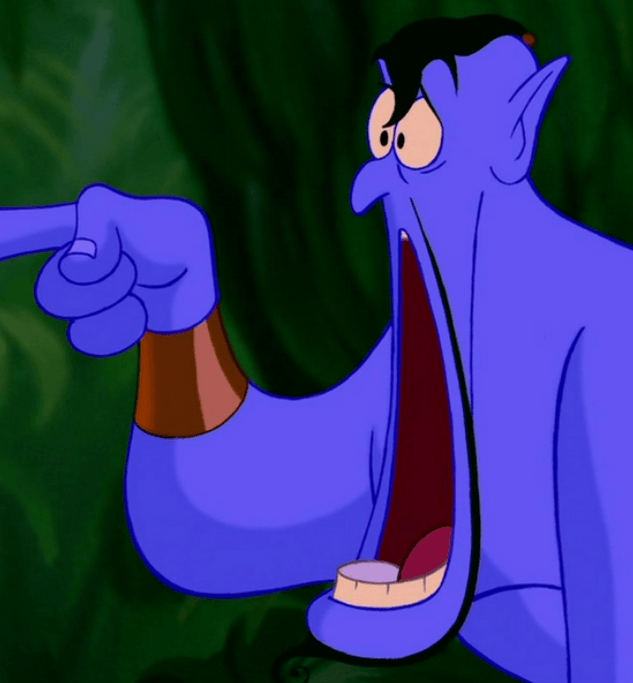
How come the Genie is aware of modern innovations, like cars and electricity, and 20th-century celebrities like Jack Nicholson and Arnold Schwarzenegger? And if he’s been in the lamp “10,000 years” since all that, what year could it possibly be when he awakes?
[rtk_adunit_top]
Furthermore, how come Agrabah looks like an isolated settlement in the middle of a post-apocalyptic wasteland, where animals are oversized and on occasion even possess seemingly extraordinary intelligence (see: Iago, Abu)?
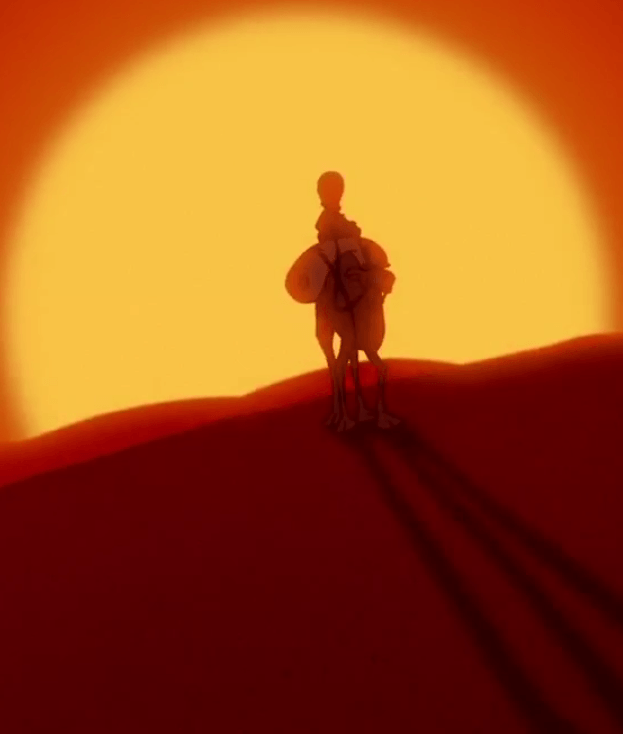
Well, according to some fans, the only possible explanation is this: a nuclear war occurred at some point in the 90s – where Genie’s pop culture knowledge abruptly stops – and Agrabah is all that’s left.
[rtk_adunit_middle]
Sadly, this intriguing theory is exactly that. In 2015, co-director Musker denied that he ever imagined Aladdin was set in a post-apocalyptic future world when he told E!: “I haven’t even heard that one.”

The so-called evidence for the theory points more to cultural awkwardness than genuine intrigue. For example, while ‘Allah’ occurs frequently in the script, there is no Islamic iconography. It’s likely that, aware of the recent Gulf War, Disney sought to only briefly include Islam while still leaning on an exotic setting.
[rtk_adunit_bottom]
Theorists also point to the SEGA Genesis Aladdin videogame, which depicts what some believe to be an unexploded atom bomb in one of the levels. This is more likely to be a pair of rocks.
15. The Peddler at the beginning of the film is the Genie in disguise
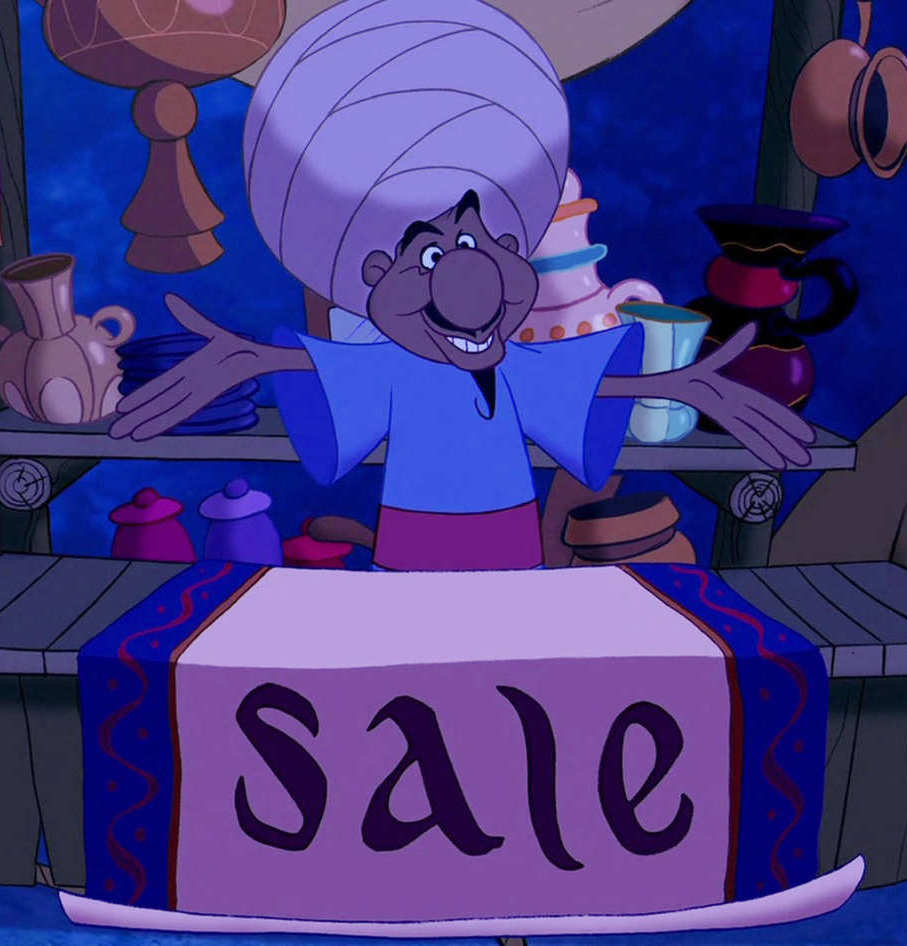
While the theory about Aladdin’s ‘post-apocalyptic’ setting is, unfortunately, all bunkum, there’s another fan theory that’s been proved 100% true.
[rtk_adunit_top]
For years, Aladdin enthusiasts speculated whether the Peddler character was just the Genie in disguise – after all, he breaks the fourth wall and he sure sounds a lot like Robin Williams.

Co-director Ron Clements addressed the theory in 2015: “That’s true! That was the whole intention, originally. We even had that at the end of the movie, where he would reveal himself to be the Genie, and of course Robin did the voice of the Peddler.
[rtk_adunit_middle]
“Just through story changes and some editing, we lost the reveal at the end,” added Clements. “So, that’s an urban legend that actually is true.”
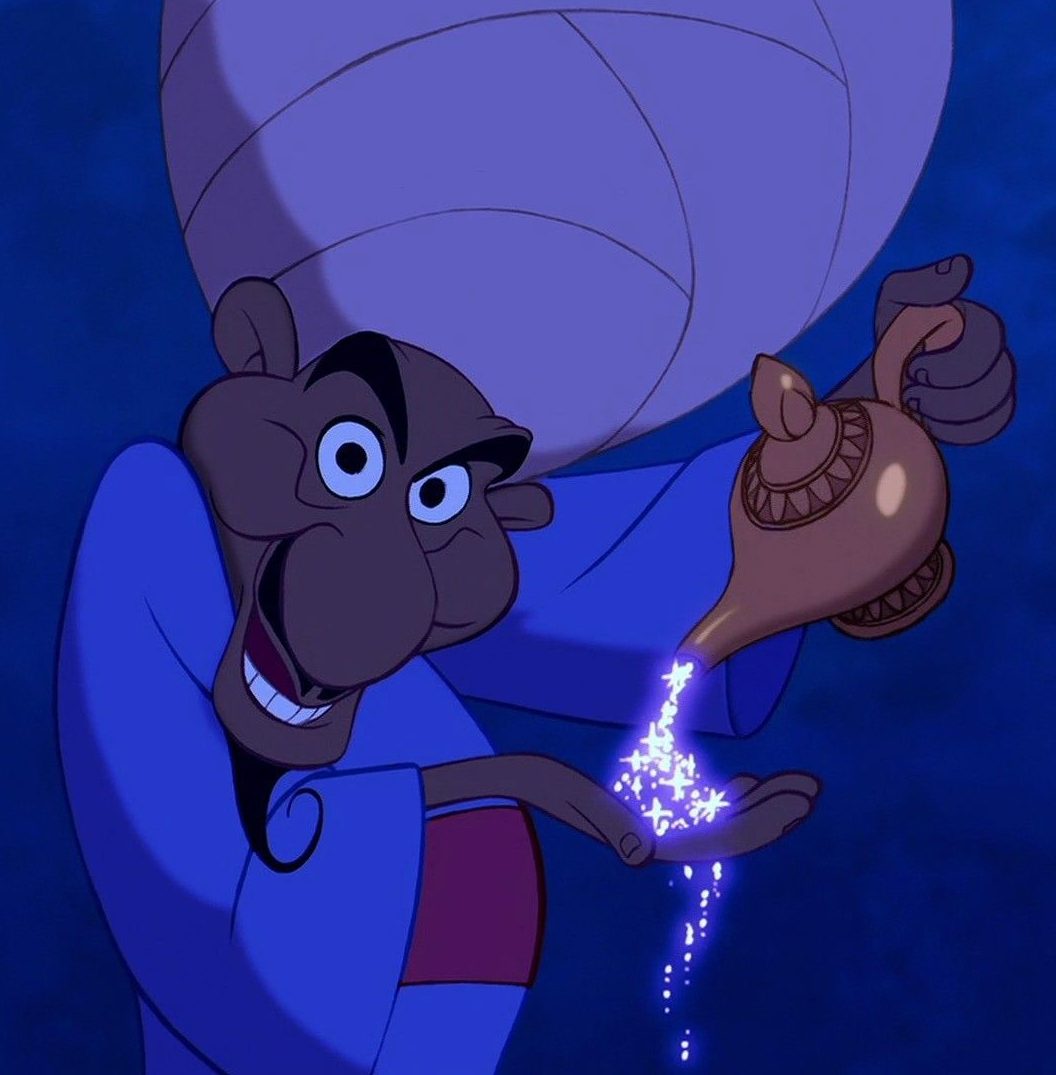
Another theory that passes muster, at least in the final cut of the film, is that the Peddler devises the events of the film as an elaborate ruse to sell the lamp.
[rtk_adunit_bottom]
Whatever you choose to believe, the Peddler is dropped in subsequent installments, and straight-to-VHS sequels, like The Return of Jafar, were critically panned. Coincidence? We think not.
14. It’s one of the ‘most controversial films ever’

Aladdin might be a much-loved classic to many, but that doesn’t mean the film is to everyone’s taste.
[rtk_adunit_top]
In 2006, Entertainment Weekly published its list of the 25 Most Controversial Movies Ever, where Aladdin was placed alongside the ultra-violent likes of Natural Born Killers and Caligula and political hot potatoes like United 93 and Do the Right Thing.

Why? Well, on the film’s release, Aladdin was opposed by the American-Arab Anti-Discrimination Committee (ADC), who argued that the film portrayed the Arab world in a negative light, including the hooked noses and pointed chins of its villainous characters.
[rtk_adunit_middle]
Infamously, the film’s opening number – Arabian Nights – contains a lyric that immediately raised some eyebrows. The Peddler sings that the people of Arabia “cut off your ear if they don’t like your face,” adding “it’s barbaric but hey, it’s home!”

Responding to the backlash, Disney pledged to rewrite the lyrics for the film’s video release and any subsequent theatrical releases.
[rtk_adunit_bottom]
Today, the film announces that Arabia is a place “where it’s flat and immense, and the heat is intense,” though the original lyrics still exist on some early versions of the film’s soundtrack.
13. The film was entirely rewritten with just a year until release

Talk about tight deadlines: in April 1991, Disney’s then-chief, Jeffrey Katzenberg, asked that the Aladdin story that the film’s writers had been working on for years be entirely changed – and still in time for a November 1992 release.
[rtk_adunit_top]
Katzenberg asked that the character of Aladdin’s mother be entirely scrapped, and that Aladdin, Jasmine and Iago be given different personalities.
https://www.youtube.com/watch?v=Eq-eQKoEycM
Katzenberg also suggested that many songs as well as the outline of the film, written by Howard Ashman, who had died the previous month from complications due to AIDS, be changed.
[rtk_adunit_middle]
Understandably, the day has come to be known as Black Friday by those who worked on the Aladdin project. Ashman had initially conceived the project in 1988 and had submitted a 40-page film treatment that same year; almost all of it was thrown out.

Ashman had initially conceived of Iago as an uptight Brit, but this version of the character was rejected after the new screenwriting duo of Ted Elliott and Terry Rossio stumbled upon Gilbert Gottfried’s performance in Beverly Hills Cop II.
[rtk_adunit_bottom]
Coincidentally, an anxious British bird would then appear in Disney’s next film: Zazu in 1994’s The Lion King, portrayed by Rowan Atkinson.
12. There are Disney Easter eggs galore

It’s become a studio tradition, and Aladdin is no exception: the film is stuffed with Easter eggs nodding to other Disney movies.
[rtk_adunit_top]
To name only a few examples, The Little Mermaid’s Sebastian appears out of Genie’s cookbook as he attempts to concoct Aladdin’s wish to be a prince and Beast from Beauty and the Beast shows up in the Sultan’s tower of toys.
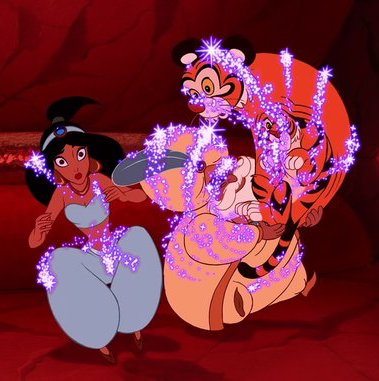
There’s also a cheeky Hidden Mickey: towards the end of the film, when Rajah is turning back into a tiger from a kitten, his face briefly morphs into having Mickey Mouse’s iconic nose and ears.
[rtk_adunit_middle]
However, these in-house Easter eggs were not solely the work of the animation team, nor were they always self-aware notes in the script. As with many of Aladdin’s most joyful moments, some derived from Robin Williams himself.

While recording his voiceover, Williams was encouraged to gesticulate and add physical impersonations. Under the watchful eye of the Genie’s animation supervisor, Eric Goldberg, many of these ended up in the finished film.
[rtk_adunit_bottom]
One of these is Genie’s impression of Pinocchio, when Aladdin promises him freedom. It’s a Williams original.
11. Patrick Stewart regrets saying no to playing Jafar
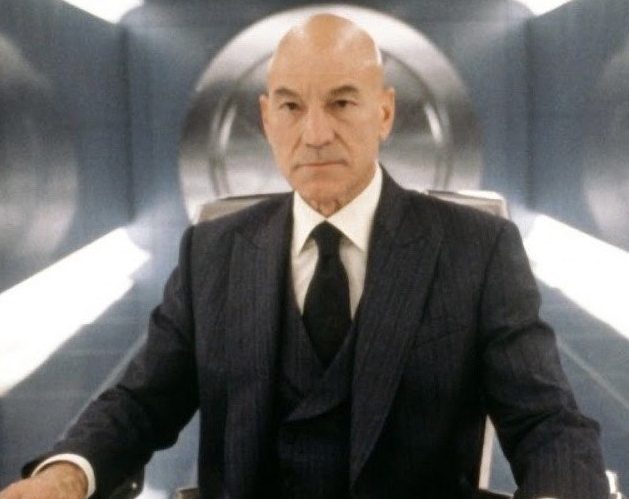
The history of cinema is brimming with near-misses: somewhere, there’s an alternate universe in which Eric Stoltz played Marty McFly and Tom Selleck played Indiana Jones. You can add Patrick Stewart playing Jafar to that list.
[rtk_adunit_top]
Long a staple of British theatre, Star Trek: The Next Generation, which started airing in 1987, had made the silken-voiced actor a household name. Disney sought him out – and it wasn’t the first time.

In fact, Stewart had previously been offered the parts of King Triton in 1989’s The Little Mermaid and Cogsworth in 1991’s Beauty and the Beast. Owing to scheduling conflicts, he turned down both.
[rtk_adunit_middle]
Stewart would also turn down The Lion King’s Zazu and Pocahontas’ Governor Ratcliffe, but it’s the role of Jafar that he regrets turning down the most.
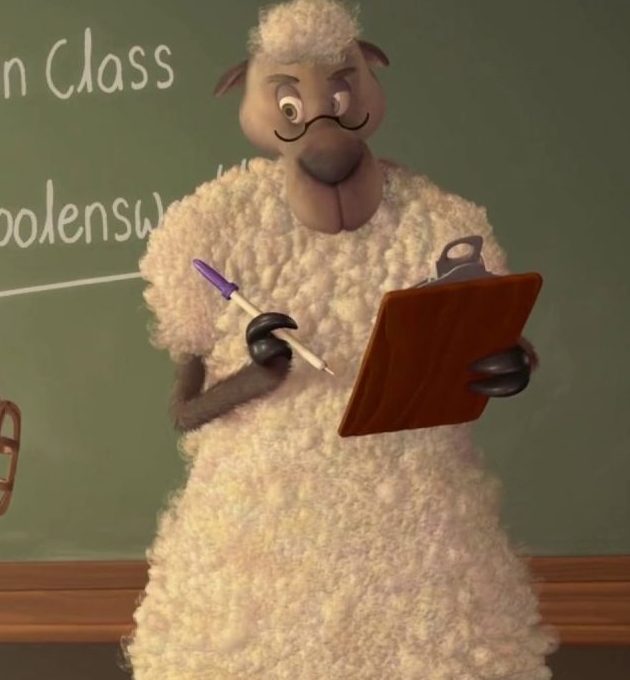
The actor would eventually make his Disney debut as Mr Woolensworth in 2005’s Chicken Little and contributed to a Disney classic – if tangentially – with a part in 2006’s direct-to-DVD Bambi II.
[rtk_adunit_bottom]
In a point of trivia that could be considered unflattering, Stewart is the only cast member of Bambi II to have been alive for the release of the 1942 original.
10. It was the first animated movie to gross more than $500 million
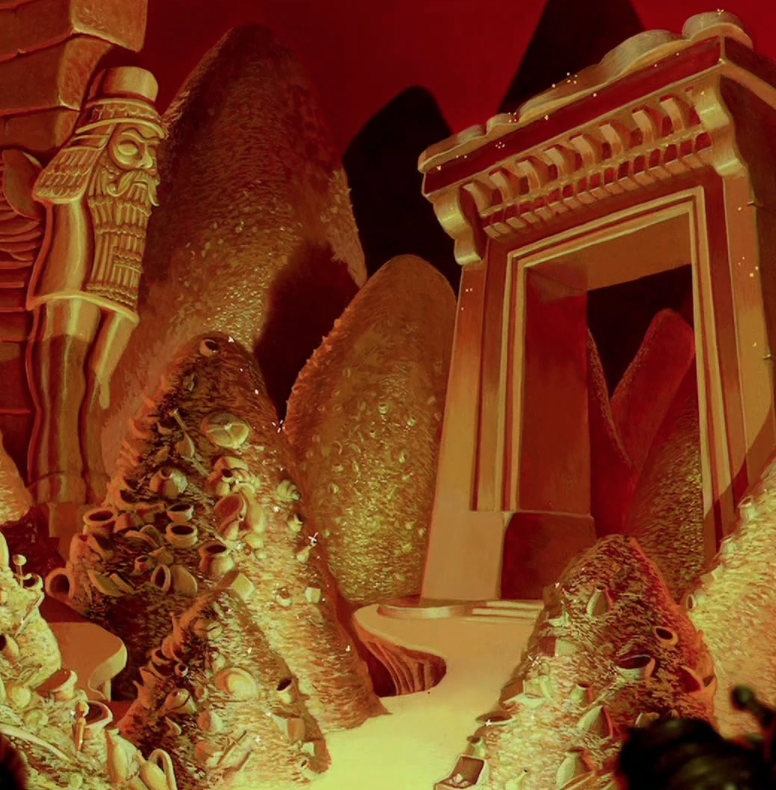
In Disney’s history books, Aladdin is often in danger of being overshadowed. While it was enormously critically and commercially successful, most of its records were obliterated by The Lion King in 1994.
[rtk_adunit_top]
However, Aladdin remains the first animated movie to gross more than $500 million. Given that it was Disney’s 28th fully-animated feature, that’s no small feat.
https://www.youtube.com/watch?v=5VdZewCFyfg
Grossing $504 million worldwide, Aladdin also set records for home video sales, grossing a further half a billion. Disney never had a friend like video-cassette.
[rtk_adunit_middle]
Star Wars was the first live-action film to gross more than $500 million, though it achieved this feat over the course of three years, passing the all-important dollar mark in 1980 and currently totaling $775.5 million.

Among films released in 1992, Aladdin finished far ahead of its closest competitor, The Bodyguard, which reaped $411 million.
[rtk_adunit_bottom]
Unfortunately for the Middle Eastern moneymaker, Aladdin pales in comparison to The Lion King’s near-$1 billion haul less than two years later.
9. Robin Williams signed up after seeing Genie do Williams’ stand-up

By the early 90s, Robin Williams was a bona fide movie star. However, the anarchic comedy actor had initially made his name as a stand-up.
[rtk_adunit_top]
Initially, there were doubts about casting Williams as Genie on all sides. It was the efforts of Eric Goldberg, lead animator for Genie, that convinced Williams to plump for the part.
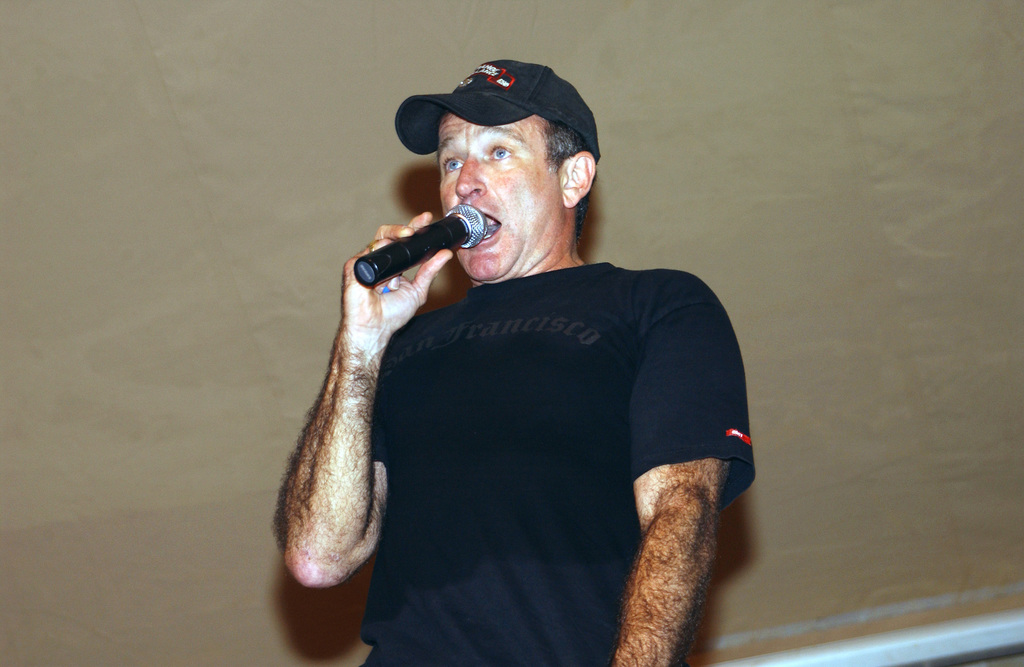
- Credit: TSGT ROBERT WIELAND, USAF/506 ECS/Picyrl
That’s because Goldberg made an animated version of part of Williams’ 1979 one-man show, Reality… What a Concept!, with Genie’s supernatural antics enhancing Williams’ jokes.
[rtk_adunit_middle]
Goldberg had no idea that Williams would ever see the material until Jeffrey Katzenberg announced the actor would be coming to the studio for a viewing.
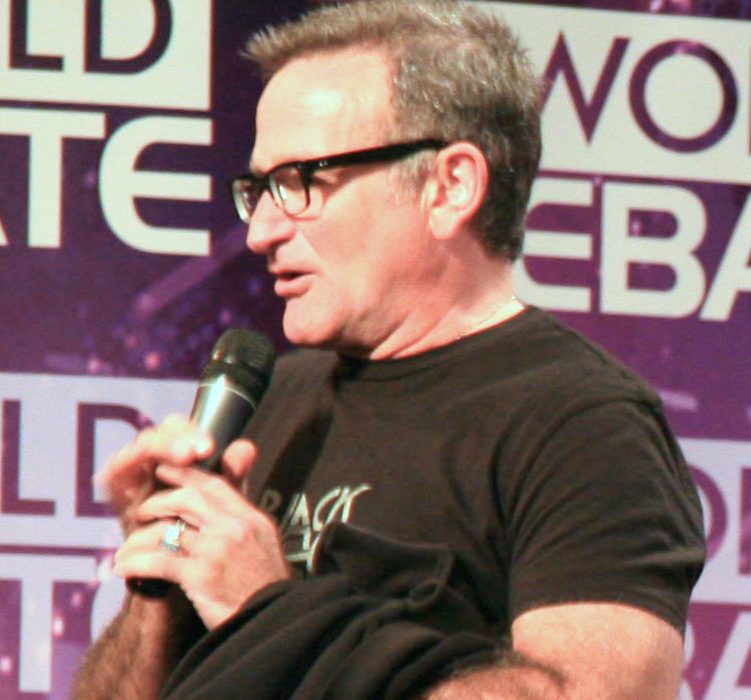
- Credit: Wikimedia Commons
A self-confessed fan, Goldberg was ecstatic when Williams laughed at his footage. “He could see the potential of what the character could be,” Goldberg allegedly recalled at a book signing. “I’m sure it wasn’t the only factor, but then he signed the dotted line.”
[rtk_adunit_bottom]
Williams continued to perform stand-up comedy throughout his film career, culminating in a 2009 HBO special in which he revealed how the art form had initially fuelled his drug and alcohol addictions.
8. The film was changed because of the Gulf War

At first, the city of Agrabah – not a real place, we’re sad to report – was not Aladdin’s primary setting.
[rtk_adunit_top]
Rather than rooting their story in a fictional place in the faraway past, the filmmakers first settled on the very real Baghdad, Iraq. Then the Gulf War happened.

Says co-director John Musker about the tricky development: “Roy Disney said, ‘This can’t be in Baghdad.’ So, I took letters and did a jumbled anagram and came up with Agrabah.”
[rtk_adunit_middle]
Beginning in August 1990, the Gulf War was sparked by an Iraqi invasion and annexation of Kuwait. A coalition of 30 nations entered the region ostensibly to defend Saudi Arabia and liberate Kuwait from the autocratic rule of Saddam Hussein.

While Aladdin released two years after the involvement of coalition forces concluded, the lasting impact of the conflict was severe.
[rtk_adunit_bottom]
As one of the world’s first heavily-televised wars, in which major cable TV networks showed missiles striking targets in newfound detail, Disney was keen to lift its fantasy caper out of its gritty, war-torn reality.
7. Jasmine’s appearance was inspired by Labyrinth
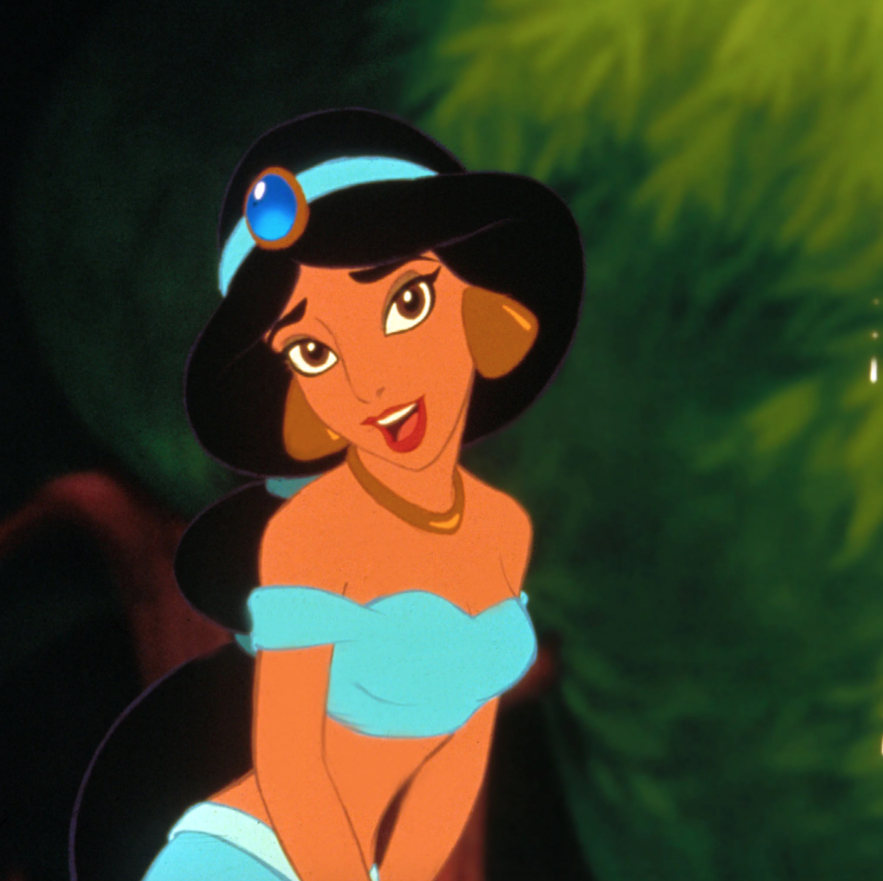
It’s no secret that animators draw on a wealth of influences when it comes to character design, but the inspiration behind Disney’s only Arab princess might surprise you.
[rtk_adunit_top]
According to Mark Henn, the lead animator for the character, Jasmine’s appearance was based on Jennifer Connelly, who at the time was best known for her star turn in 1986’s Labyrinth opposite David Bowie.

Initially, Henn conceived Jasmine’s design by looking at the back of a young woman’s head. Suffering from artist’s block, he took a break from his work at Disney-MGM studios by heading to its adjacent theme park, spotting the young woman in a crowd. Her identity is still unknown to this day.
[rtk_adunit_middle]
Henn then fleshed out this design by using his younger sister’s high school yearbook picture. Jennifer Connelly’s face – in particular, her eyebrows – completed the design.

While Jasmine was pioneering as Disney’s first non-white princess, it’s worth noting that her initial designs were rejected. The features of her namesake, actor Jasmine Guy, were deemed “too severe.”
[rtk_adunit_bottom]
Instead, Jasmine’s features were based on white women and her body shape on the Taj Mahal, the famous mausoleum in India.
6. Aladdin was based on Tom Cruise

Although Aladdin is one of the first Disney films to prioritise the story of a male protagonist above its princess (unlike, for example, Cinderella and The Little Mermaid), the eponymous vagabond was heavily influenced by Jasmine’s character design.
[rtk_adunit_top]
Aladdin was initially depicted as an innocent-looking rooftop caperer, a Michael J Fox-type, but studio executives – including Jeffrey Katzenberg – worried that the teen thief lacked sex appeal.

The issue came to a head once Jasmine was redesigned as sophisticated and literally curvy; Katzenberg didn’t believe Jasmine would ever fall for the noodle-armed Aladdin, and asked for a design in line with movie heartthrob Tom Cruise.
[rtk_adunit_middle]
As a result, animators upped the character’s age, removed his shirt and gave him a trademark Cruise grin.

“There’s a confidence with all of [Tom Cruise’s] attitudes and his poses,” said Aladdin’s animation supervisor Glen Keane.
[rtk_adunit_bottom]
Much like Genie, Aladdin’s harem pants were based on MC Hammer, making the character a mash-up of a famous time traveler, an ageless action hero and Hammertime.
5. In the original script, Jasmine had her own song

The 2019 remake of Aladdin made headlines for several reasons: it made more than $1 billion at the global box office, had Will Smith attempt to replace Robin Williams as Genie and offered actor Naomi Scott the chance to clean out her lungs with an original song, Speechless.
[rtk_adunit_top]
However, had Howard Ashman had his way, Jasmine would have had a song in the original film, and we know exactly what it would have been.

Call Me Princess was intended to match Jasmine’s initial concept: a bratty, self-obsessed princess. With lyrics like “Lord, it’s so taxing / Ruling these darn Third World nations” and “Nobody’s voice is as shrill as mine / Daddy thinks that I sound just fine,” it certainly achieves its goal.
[rtk_adunit_middle]
The song was included in the 2011 stage adaptation of Aladdin, though its context was retooled to be more self-aware: Jasmine uses the song to deliberately repulse suitors.
The song is markedly different to Speechless, a song that foregrounds its feminist credentials through Jasmine’s refusal to stay silent. However, even Speechless isn’t the first time Jasmine sings.
[rtk_adunit_bottom]
That honour belongs to 2007’s direct-to-video effort Disney Princess Enchanted Tales: Follow Your Dreams, which features I’ve Got My Eyes On You. The song is used to soothe a spooked horse.
4. The film supposedly subliminally tells teenagers to take off their clothes

There’s no question that Disney is a cultural monolith. However, while the corporation has so far used its wide influence to make a lot of money, some believe its motives are more sinister.
[rtk_adunit_top]
Some conspiracy theorists love to claim the presence of sexual imagery in Disney films – and occasionally, they’re right. In the case of Aladdin, it’s rumoured that the lead character tells teens to strip.
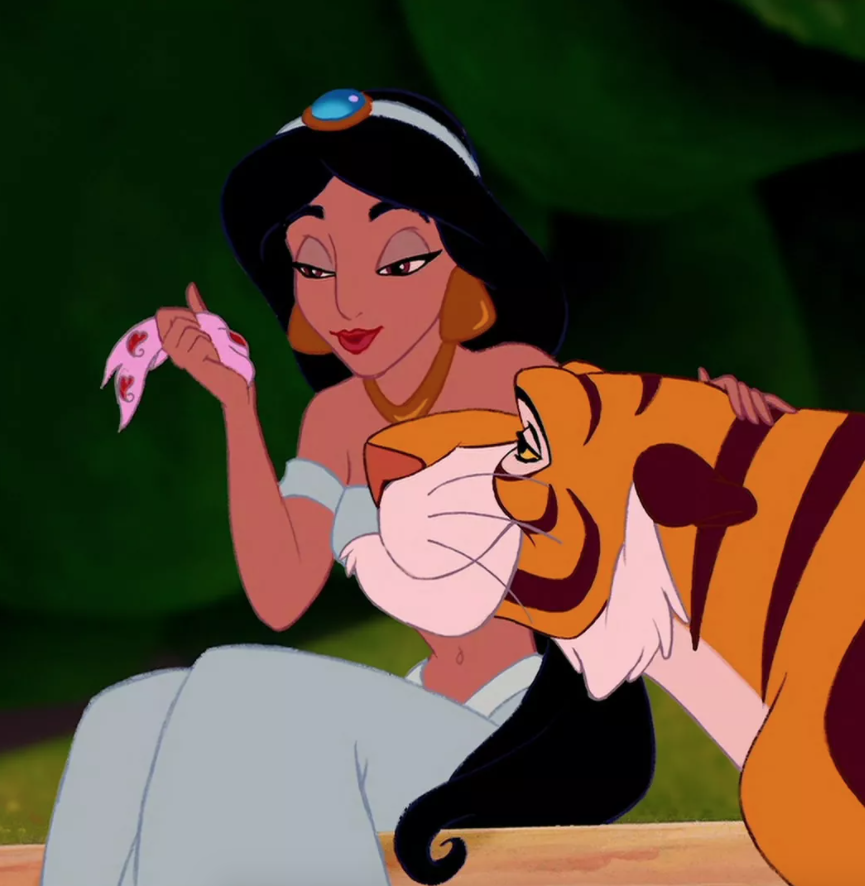
The damning episode occurs when Aladdin encounters Jasmine’s pet tiger, Rajah. While Aladdin supposedly says “Nice kitty, take off and go, go on,” some believe the Disney prince actually says “Good teenagers, take off your clothes.”
[rtk_adunit_middle]
Granted, that would be quite a strange thing to say to a vicious tiger, but Disney’s psychological warfare is a complicated beast.

Theorists claim that the introduction of a tiger roar muddies the recording to create a subliminal message, one heightened by the fuzzy audio quality of VHS.
[rtk_adunit_bottom]
Naturally, the theory is completely unfounded, though Disney has removed the ad-lib from future releases to avoid needless controversy – or maybe because they got caught. The truth is out there in your 90s cassettes, folks!
3. The magic carpet breaks the sound barrier

If you were to do a scientific breakdown of Aladdin, you’d probably start with the sorcery and magic wishes – but it’s still fun to point out just how fantastical something like the magic carpet is.
[rtk_adunit_top]
In fact, based on the scenes included during A Whole New World, the magic carpet almost certainly breaks the sound barrier on its global escapade.
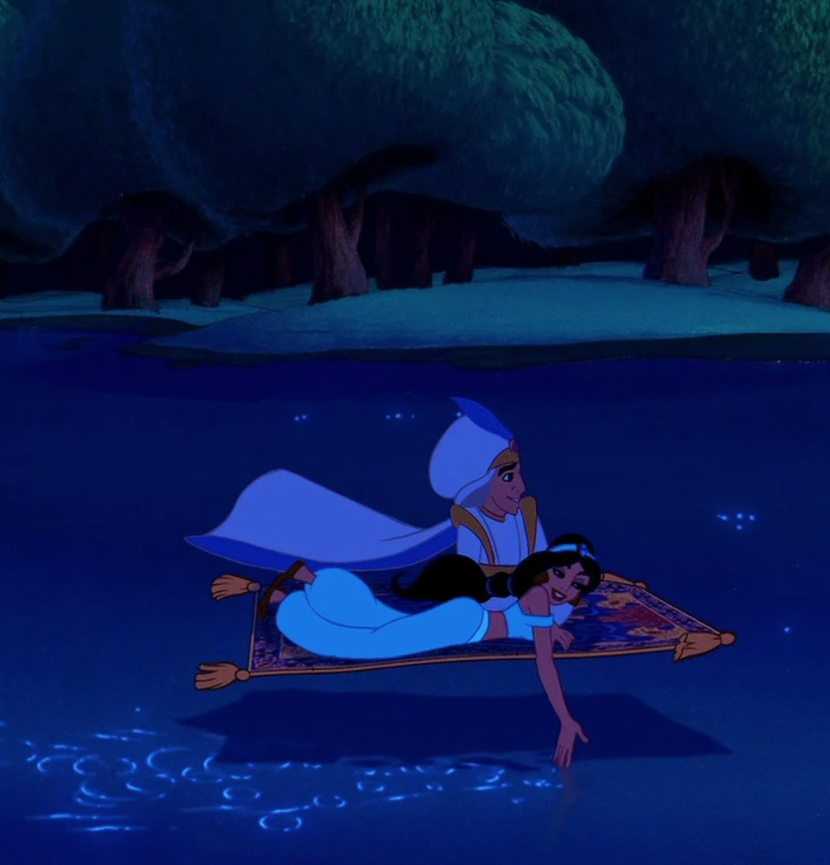
In addition to soaring above Agrabah, the carpet takes Aladdin and Jasmine to Egypt, China and Greece in a single night – in all, a 10,000-mile round trip. Running the numbers, that means the carpet travels at 1.65 times the speed of sound, or just under 1,266 miles per hour.
[rtk_adunit_middle]
For comparison, the sound-barrier-busting Concorde could reach a top speed of 1,354 miles per hour – the jet could also carry up to 100 passengers, which would be a bit of a squeeze on the old rug.

The magic carpet remains a technical marvel for being one of the first computer-animated characters in a feature film.
[rtk_adunit_bottom]
While the tassels were traditionally animated (that is, drawn by hand), the body of the carpet was done entirely with computers.
2. It was the first-ever film to receive an Icelandic dub

- Credit: Wikimedia Commons
If you had to guess at the first film dubbed in Icelandic, you probably wouldn’t pick a musical fantasy situated in the Middle East. And you’d be dead wrong.
[rtk_adunit_top]
While it’s surprising on its face that no film received an Icelandic dub until 1993, it should be noted that many foreign films screened in Iceland use the Danish dub. In Icelandic schools, English or Danish is taught as a compulsory second language.

It’s unclear why Disney chose Aladdin to be the first film to receive an Icelandic dub, but they had no regrets. In fact, the company sent an effusive letter to Stúdíó Eitt, who were responsible for the dub, to congratulate them on a successful recording.
[rtk_adunit_middle]
According to Disney, they had never seen such a high-quality dub on the first attempt.

Aladdin was also the first movie to be dubbed in the Indian languages of Tamil and Telugu, with more than 40 different dubs in circulation.
[rtk_adunit_bottom]
However, Disney’s award for the best foreign-language dub would go to the Finnish version. The legendary Finnish comedian Vesa-Matti Loiri, who plays Genie, hadn’t even heard Robin Williams’ version before recording, imbuing the animation with his own vocal sensibilities.
1. Jafar is based on a real Arabian alchemist

Disney is known for casting a wide net when it comes to character inspiration; after all, the appearance of The Little Mermaid’s Ursula is based on the iconic drag queen Divine. However, they really put the historical work in when it came to Aladdin.
[rtk_adunit_top]
The scheming sorcerer and vizier Jafar is based on Abū Mūsā Jābir ibn Hayyān, sometimes known simply as Geber or Jabir, often given the honorific title ‘The Father of Chemistry’.

The author of a vast body of work that includes philosophy, cosmology and mysticism, Jabir is famous for creating the world’s oldest classification of chemical substances – an early periodic table – though his exact identity is disputed.
[rtk_adunit_middle]
In fact, some scholars believe that ‘Jabir’ was a nom de plume used by several writers, owing to the scope and depth of the work produced in his name – some 3,000 treatises.
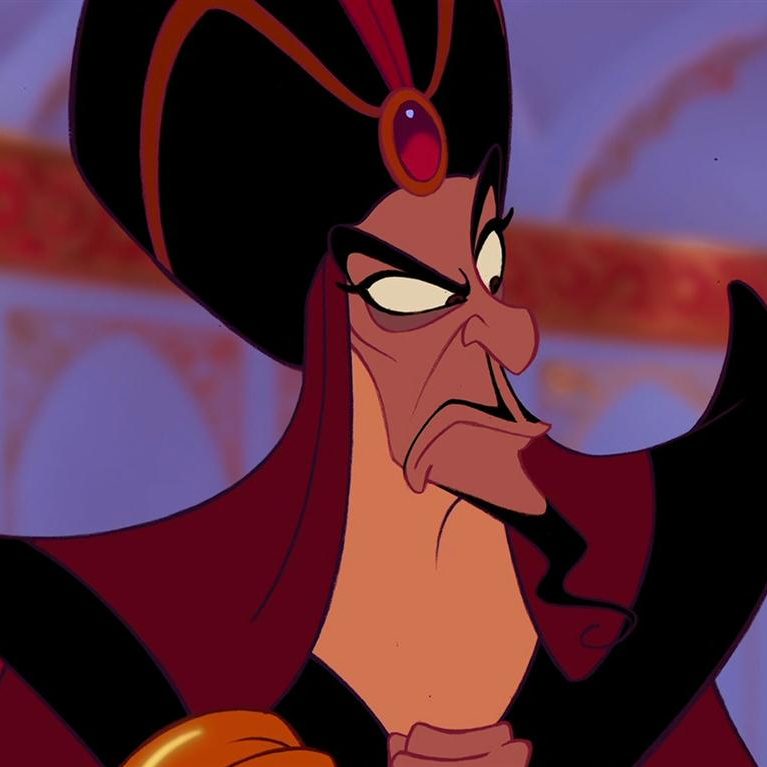
This also wouldn’t be the only time that Jabir’s likeness was used in popular culture. In the S.H.I.E.L.D. comic book series, depicting the ultra-secret organisation of the Marvel universe, Jabir is revealed to have been its leader in the 8th century. He was a busy man!
[rtk_adunit_end]

